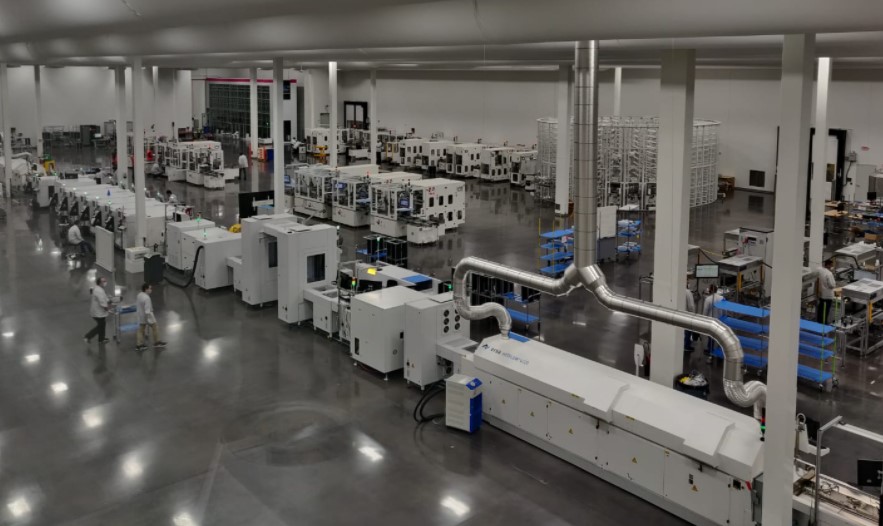Ericsson’s 5G factory in Lewisville, Texas, is in many ways a manifestation of the company’s hopes for a 5G future: Sustainable and smart, sleek and spacious. Last February, the newly built facility began producing Ericsson’s Street Macro millimeter-wave 5G product – the same equipment that is deployed within the factory, using 28 GHz spectrum in a private network with on-site core that also utilizes LTE frequencies, additional wireless technologies and advanced data processing to realize the potential of Industry 4.0.
Erik Simonsson is the head of Ericsson’s 5G factory. He describes the factory itself as “very airy, and it feels very vibrant.” There’s a high roof and a modern feel, and the energy that comes from both a space and employees dedicated to putting new technology together and sending it out into the world.
Ericsson has developed a number of advanced technology use cases in the new factory factory. One of them is connecting autonomous mobile robots, which are fairly common in warehousing and production environments.
“We’ve equipped them with 5G modems so that we can connect to our own 5G network. Where 5G is helping us there, is that in these mobile robot environments, you typically have different handover points in Wi-Fi, and you have a little bit of lag,” he explains. One of the challenges that 5G helps to solve is faster reactions and the ability to “see” around corners in the factory.
“These are technologies that will develop over time, and I think we will see more and more speed and productivity from that type of equipment, versus what you would have without that technology,” he added.
Simonsson says that as Ericsson has also worked with mixed reality in the factory for remote support, it has seen the parallels with gaming in the consumer space and learns about what is important in the experience of interacting with people at other sites: Increased video quality, high-speed video transfer, low lag. “In Covid, this has been and will continue to be important,” he notes.
Subscribe now to get the daily newsletter from RCR Wireless News
In addition, Ericsson has been working both with manufacturers of the mobile robots on how that use case can continue to both be developed and be adopted, through getting the 5G connectivity built into the robots themselves. While the pandemic has limited the company’s ability to physically bring visitors to the site, Simonsson says that video and virtual tours have been held. The tech in play at the factory is helping Ericsson to figure out how to get more out of its machinery, how to integrate sensors and sensor data into its operations and enabling the company to avoid having to pull cables or add Wi-Fi hot spots.
“In manufacturing, you have a lot of problems to solve – that’s kind of the nature of our business,” he says. “But what we see now when technology like these 5G are becoming more and more available, is that we can get a lot quicker at solving problems. We get a lot more flexible in how we can move equipment around. That’s what excites me, especially when you have production facilities that need to move a lot of equipment around and need to be able to have this speed in operations. … It also brings this joy of technology development into manufacturing – so when you see engineers working with this and solving these problems, that’s super exciting to me.”
The biggest learning, Simonsson says, is the partnerships that have to be part of such deployments. “Technology is moving so fast,” he says. “Everyone is trying to stay ahead, but it also becomes a game of keeping up.” In addition to the typical vendors of manufacturing equipment and services, new companies are coming in and staying up to speed means keeping an eye on what other companies and industries are doing.
“It’s completely different, this learning by doing. When technology is moving fast, you can’t really have a three-year project plan and then execute, and wait for something to happen at the end. You need to work in very fast increments,” Simonsson said. “That’s something that we built into our organization as well, it’s a more agile approach. You define what are we going to deliver the next quarter, you focus on that, you learn, you re-adjust, you adapt and then you take the next step. That’s been fundamental also for what we build, and what we will see in the coming years as well in this site.”
Interested in reading more about how telecom and tech companies are learning about 5G, MEC and virtualization by deploying them firsthand? Check out RCR Wireless News’ editorial report and our accompanying webinar featuring Ericsson, Dell Technologies and Rogers.
